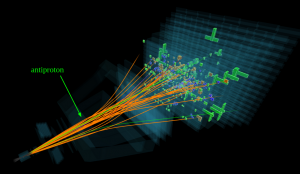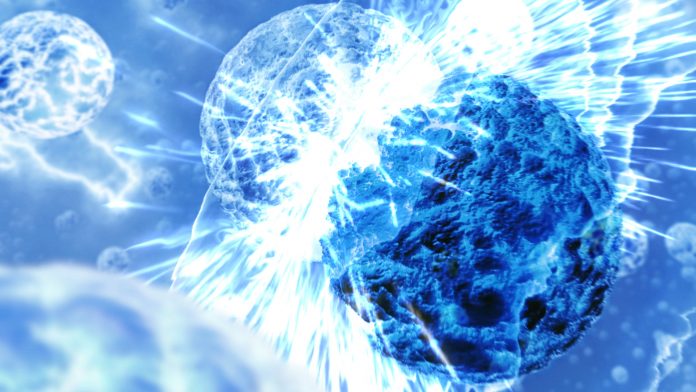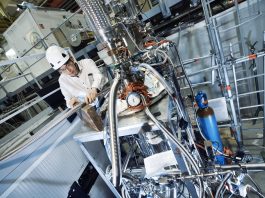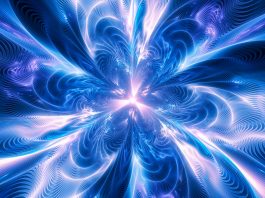LHCb researchers analyse particle collisions at the Large Hadron Collider (LHC) to determine whether antimatter that is detected by experiments in space could originate from dark matter.
The LHCb experiment is one of eight particle physics detector experiments collecting data at the Large Hadron Collider at CERN. LHCb is a specialised b-physics experiment, intended primarily to measure the parameters of CP violation in the interactions of b-hadrons. Such experiments can help to explain the matter-antimatter asymmetry of the Universe.
The LHCb collaboration presented an analysis of particle collisions at the Large Hadron Collider (LHC) at both the Quark Matter conference, held on 7 April 2022, and at the recent Rencontres de Moriond conference. This analysis has the potential to help to determine whether any antimatter detected by experiments in space could originate from the dark matter that holds galaxies such as the Milky Way together.
Space based experiments, such as the Alpha Magnetic Spectrometer (AMS) which was assembled at CERN and installed at the International Space Station, has detected the fraction of antiprotons – the antimatter counterparts of protons – in high-energy particles called cosmic rays.
Antiprotons
These antiprotons could possibly be created when dark-matter particles collide with each other. However, they could also be formed in other instances, such as when protons collide with atomic nuclei in the interstellar medium, which is predominantly made up of hydrogen and helium.
To discover whether these antiprotons originate from dark matter, physicists therefore must estimate how often antiprotons are produced in collisions between protons and hydrogen, as well as between protons and helium.
While some measurements of proton and hydrogen collisions have been conducted, and the LHCb reported in 2017 the first-ever measurement of proton and helium collision, the LHCb measurement included only prompt antiproton production – meaning antiprotons that are produced right at the place where the collisions took place.

A proton–proton collision event recorded by the LHCb detector, showing the track followed by an antiproton formed in the collision
Antihyperons into antiprotons
In their new study, the LHCb team also searched for antiprotons that were produced at some distance from the collision point, through the transformation or ‘decay’ of particles in a process called antihyperons into antiprotons.
To conduct this new measurement the LHCb researchers, who would usually utilise data from proton–proton collisions for their investigations, instead used data from proton–helium collisions obtained by injecting helium gas into the point where the two LHC proton beams would typically collide.
The researchers analysed a sample of some 34 million proton–helium collisions, by measuring the ratio of the production rate of antiprotons from antihyperon decays to that of prompt antiprotons.
Collision energy scale antimatter findings
As a result, the LHCb researchers discovered that at the collision energy scale of their measurement, the antiprotons produced via antihyperon decays contribute more to the total antiproton production rate than the amount predicted by most models of antiproton production in proton–nucleus collisions.
“This result complements our previous measurement of prompt antiproton production, and it will improve the predictions of the models,” explained LHCb spokesperson, Chris Parkes. “This improvement may in turn help space-based experiments find evidence of dark matter.”
“Our technique of injecting gas into the LHCb collision point was originally conceived to measure the size of the proton beams,” concluded LHCb physics coordinator Niels Tuning. “It is really nice to see that it also improves our knowledge of how often antimatter should be created in cosmic collisions between protons and atomic nuclei.”









